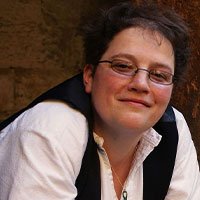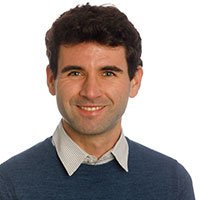Forensic frontiers: revolutionising crime scene analysis with VR technology
Imagine sitting in a boardroom, putting on a virtual reality (VR) headset, and you’re instantly transported to a 3D view of the crime scene hundreds of miles away. Sounds like science fiction?
Professor Niamh Nic Daeid, Vincenzo Rinaldi and their expert team of visionaries at the University of Dundee's Leverhulme Research Centre for Forensic Science are on a mission to make this groundbreaking technology a reality in the field of forensic science.
Fuelled by funding from the Leverhulme Trust and supported by the Danish police, Niamh and the project team, this year’s winner of the HE Herald award for innovative use of technology, recognised a significant gap in resources allocated to crime scene investigation and courtroom integration.

In Niamh’s words:
"A lot of the funding, both for research and for innovation, has been concentrated in the laboratory space with little funding going towards the crime scene or the courtroom in terms of how we investigate crime scenes from a scientific perspective or communicate our findings in the Court."
The team’s vision was to create a systematic approach to capture crime scene images and convert them into a virtual reality environment. Aimed at supporting collaboration among scientists, police officers, and lawyers during forensic strategy meetings, this 3D immersive experience replaces traditional 2D photographs with a more comprehensive decision-making tool.
Building a strong foundation
Niamh emphasises the importance of laying the groundwork for systematic photography at crime scenes to create detailed 3D reconstructions. The goal is to ensure the technology's accuracy, enabling its integration into courtrooms while addressing measurement uncertainties.
“A key element of the piece of work is to enable this technology to be accepted into the courtroom. We need to be able to explain any measurement uncertainty associated with whatever it is that we do.
"If we decide to measure in the virtual world the length of a table top, then we need to know with as much accuracy as possible, the difference in measurement of the table top between the virtual and the physical world. A large part of the work is creating scientific robustness.”
The key is to take a measured approach. Adopting technology too early poses risks of non-acceptance if the operational aspects of the new technology are not sufficiently discussed and tested with practitioners, emphasising the need for collaboration with forensic science professionals.

Vincenzo Rinaldi, VR/AR application specialist, stresses the importance of collaboration as a two-way street, where academics work closely with practitioners to tailor the technology to their specific needs involving them in the development process, and receiving direct ongoing feedback.
“It's not about imposing solutions, but instead working together to find the best outcomes. New technologies have to be proven. We have to prove its robustness and reliability."
Bringing the crime scene to the investigator
The team envisions a future where VR technology supports decisions relating to the need for investigators to physically travel to crime scenes. In remote locations like Orkney, Scotland, accessing forensic science expertise can take a day or more.
To address this, with the team’s VR technology, crime scene investigators can use imaging technology to create a VR representation of the scene. This allows remote access to forensic scientists to assess the situation and guide onsite officers in collecting relevant evidence, minimising the need for immediate deployment from distant locations.
And it’s not just the forensic science teams who are benefiting. The university’s PhD researchers have been taking advantage of what the project has to offer. It's enabled them to have unprecedented contact with the practitioner community than perhaps would be expected of a PhD or research student in a similar position.
Bridging distances during lockdown
The pandemic didn’t stop the team from moving full steam ahead. With advancements in technology booming during this time, Vincenzo and his team developed the use of standalone VR using only a smartphone.
Picture forensic scientists, armed with their devices, skilfully providing advice about the investigation of crime scenes they'd never physically explored. The magic lies in the ability to conjure detailed reconstructions, turning hypothetical scenarios into vivid, accurate and scientifically robust virtual realities.
“We’re now shortening the distance between the expert, the remote experts and the crime scene so we can now cover three different locations across two countries. We are looking at bringing together different distributed experts into one virtual space.”
Future developments
Peering into the future, the team envisions exciting advancements as they anticipate a shift towards deploying laboratory-based tools directly to crime scenes. Miniaturised devices like multispectral cameras and spectrometers may in the future enable on-the-spot identification of even measurement of materials, such as explosives, drugs, or body fluids in the field.
The goal is to enhance the decision-making process, allowing investigators to identify crucial traces without physical contact. And automated robots and drones for systematic data collection and remote scene analysis are not a distant reality either.
Find out more
If you'd like to receive more stories delivered to your inbox, sign up for our fortnightly newsletter, Headlines.